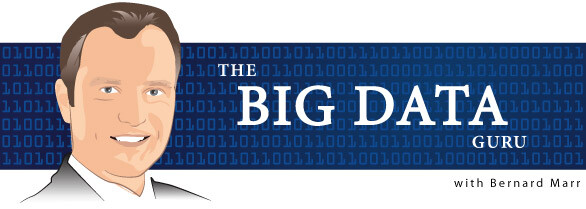
The world is getting smarter.
We’ve got smart phones, smart vacuum cleaners, even smart yoga mats. The marriage of data and technology is radically changing our world and making it smarter. And business must become smarter too.

The world is getting smarter.
We’ve got smart phones, smart vacuum cleaners, even smart yoga mats. The marriage of data and technology is radically changing our world and making it smarter. And business must become smarter too.
Big data is one big way businesses are meeting this challenge, but all too often I see companies diving in without first creating what I call a SMART framework within which to approach their data needs: Start with strategy, Measure metrics and data, Apply analytics, Report results, and Transform your business.
Before embarking on any big data project, ask and answer these five essential questions:
- What business problem do I need to solve?
There’s a tendency I see for companies to ask for as much data as possible — not because they plan to do incredibly detailed analytics, but because they don’t know what to ask for, so they ask for everything. A better idea is to start with your strategy and big business challenges or questions first, and then asking for the data you need to solve those problems. Which leads us to… - What data will I need to answer my questions?
You may be able to find the data from within the company, but you could also look to the many million new sources out there, structured and unstructured, etc. Only by knowing what data you need, however, will you know where to look for it, and how to collect it. - How will I analyse the data?
Traditional data collection and analysis is one thing — like point of sale transactions, website clicks, etc. — but where much of the promise of big data lies is in unstructured data, like email conversations, social media posts, video content, photos, voice recordings, sounds, and so on. Combining this messy and complex data with other more traditional data is where a lot of the value lies, but you must have a plan for the analysis. - How will I present the insights?
All the fancy data sets and cool analytics don’t mean anything if they aren’t presented to the right people in the right way in order to facilitate decision making. Making good use of data visualization techniques and taking pains to highlight and display important connections will help ensure that your data gets put to use, but keeping your target audience in mind is perhaps the most important thing to remember. - How will I use the insights?
Hopefully, your insights will circle back around and help solve one or more of the business problems identified in question 1, but the truth is that the data may uncover other opportunities for improvement. Companies can (and should) use the insights gained from the data to improve their decision-making, their customer experience, their employee brand and their business performance. Some questions and data sets will be one-time projects, others will need to be monitored over time, and strategies tweaked as the data indicates. Be sure to keep these factors in mind when planning how to implement changes
These questions all correlate to the SMART data framework I lay out in my new book, BIG DATA – Using SMART Big Data, Analytics and Metrics To Make Better Decisions and Improve Performance where you can read in more detail about this framework. You can read a free sample chapter here.
But I’d love to know: What questions do you have about applying big data to your field or company? Feel free to ask your questions in the comments below, and I will do my best to answer them in a future post.